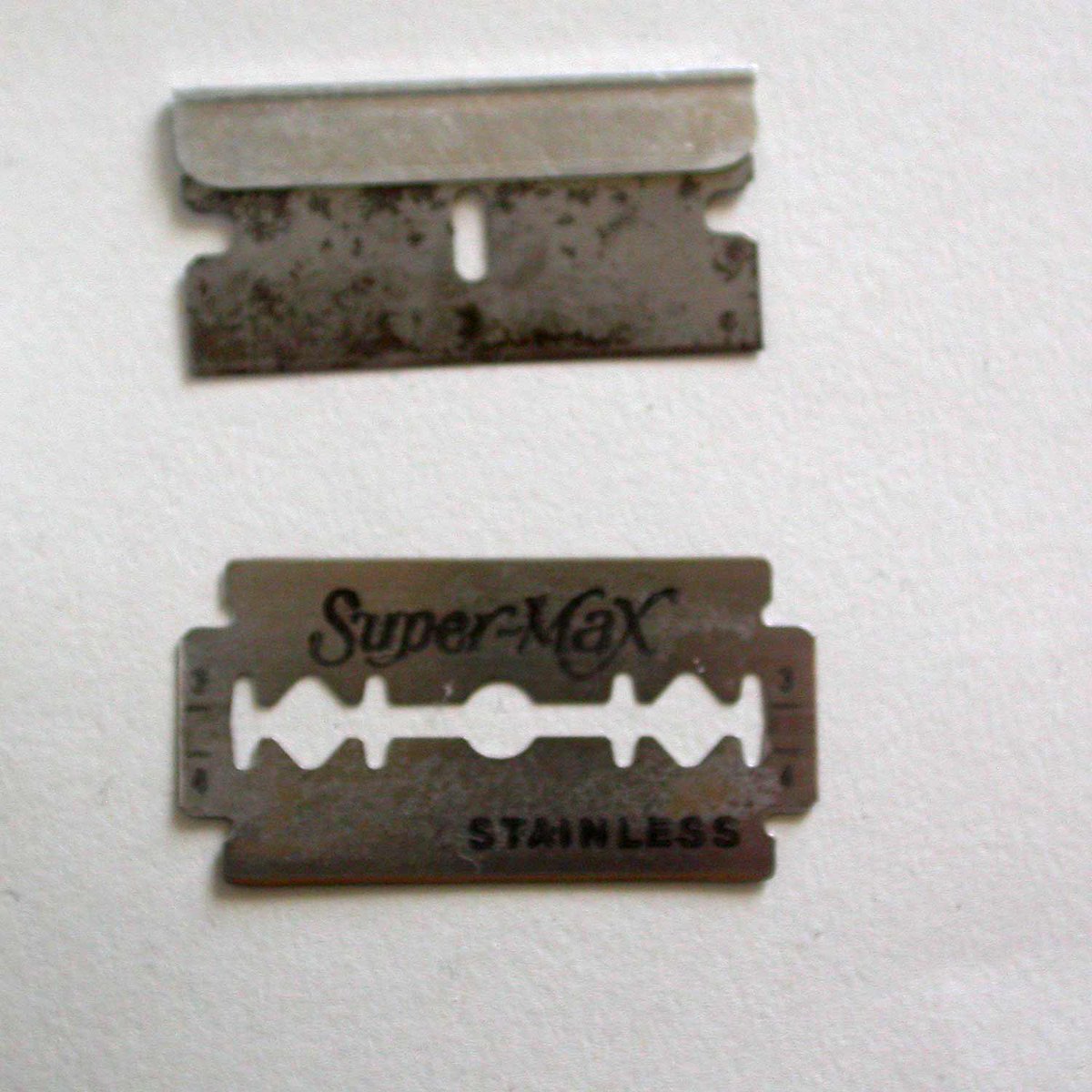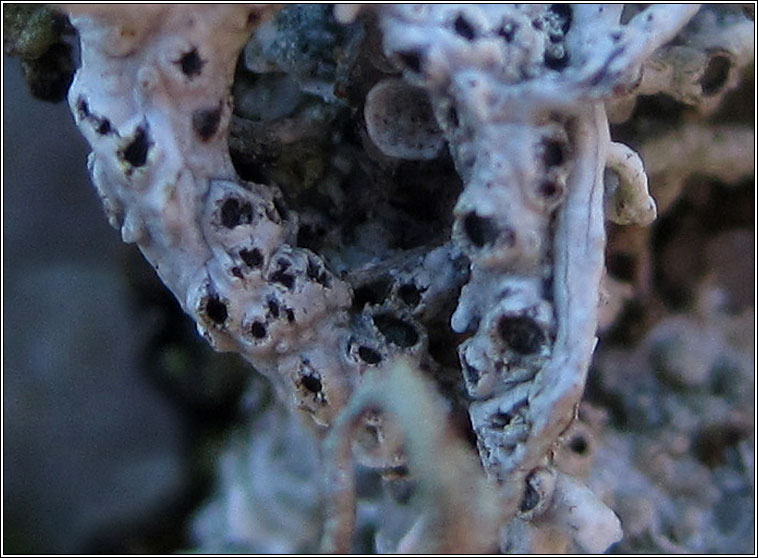
When sectioning fruiting bodies which are immersed in stone, the fine edge of the blade is soon blunted. How do I cut numerous sections of saxicolous material while minimising waste of razor blades?
Thread
Thread
https://twitter.com/obfuscans3/status/1487904835877883906
There are two basic types, single edged above which are safer and more robust but without the ultra-fine edge that I prefer in the double edged type below. 

It is best to snap (or cut) the double edged type in half lengthwise (careful) before use. The disadvantages of this type are rounded ends of the blade (makes picking up sections more difficult) and the fine edge is very easily ruined by slightest touch against hard substratum. 

I was surprised when @maxiePut first mentioned cutting razor blades with scissors but I was soon a convert. Here I have snipped off the rounded end, then snipped off a short segment once the end is blunted. 

I can keep snipping off short sections of blade, leaving a pristine and pleasantly right angled end. In this way, I can get satisfyingly parsimonious use out of every razor blade, even when working with saxicolous crusts. 

Sometimes transferring a fine section to the slide seems more troublesome than actually cutting the section. The right angled end resulting at the cut end of the blade seems particularly good at picking up sections.
If you struggle to cut good thin sections, consider collecting some spare material of something common on bark like Lecidella elaeochroma. With plenty of apothecia to go at, and without the disruption of transferring to slide, you have opportunity for uninterrupted practise.
• • •
Missing some Tweet in this thread? You can try to
force a refresh






















